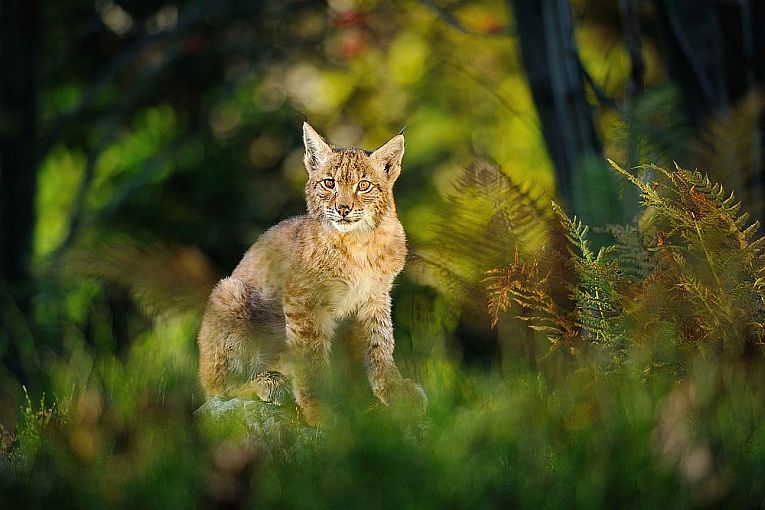The wolves who approach people where our populations are dense are providing experiments to test how effective their predation can be where their natural habitat is highly modified by human impacts.
Bears, leopards and even tigers can also impinge on our own environments, which of course, used to be theirs. Human action alters the habitat to which many carnivores have been adjusted. Their prey, their territory size, their total ecological function is affected, both directly, and also in devious ways. The Europeans on this paper do not neglect the North American or Asian examples of anthropogenic effects, while many parts of the world have different carnivores in similar situations in both cities and almost pristine natural environments that need careful study.
With rewilding and many other modern tests of urban man and woman, large carnivores are saviours of the ecosystem, maintaining the food chains in,a trophic cascade.
D. P. J. Kuijpe of the Polish Academy of Sciences in Białowiez and his colleagues from Sweden, North Carolina State University, US, the Norwegian Polar Institute, CNRS-Universite de Montpellier-Universite, France and the Nelson Mandela Metropolitan University in South Africa publish Their paws without claws
paper in the Proceedings of the Royal Society B today. The aim of the paper is to present ways of predicting various outcomes because prey behaviour, for example, is affected even by low densities of predators.
Apex predators in North American National Parks have a vital function in that semi-natural environment. Europe is smaller, has dense human populations and has been intensively modified for thousands of years by domestic animals and plants and their owners. Empty parts of Sweden have intense activity in the form of forestry, combined with the highest recorded hunting pressures on ungulate prey animals by the carnivores. Further south, in Germany, large human populations create mosaics of divers land usage for the wolves to rewild!
This European increase in large carnivores is remarkable. As well as the wolf rewilding, bear and lynx have recovered and the golden jackal has spread from SE Europe. Permanent reproducing populations now exist in most countries. How is the new population affected by poaching, hunting and traffic accidents? Australia controls its dingoes, Canis lupus dingo with very strict legalised hunting, while poaching can be even more severe. Poaching creates minor genetic bottlenecks and rapid reduction of small populations, with Swedish wolves for example. Hunting ungulates (mainly deer) or mesopredators
rarely limits their populations and may increase it.
The effect of these top predators on some ungulates can be greater than human hunters, for fairly-obvious reasons. Lynx in Europe (Lynx lynx) can easily reduce roe deer (Capreolus capreolus) populations, much more effectively than human hunters. Interactions of the human, the carnivore and its prey are also highly significant. Dama dama, the fallow deer don’t frequent closed forest situations where they can detect the scent of brown bears, unless human activity has opened-up the landscape with glades and tracks.
Large carnivores, of course, avoid humans, sometimes with fine-tuning of behaviours. Ungulates could then frequent areas where humans go, given some natural lack of sensitivity to some limited human interaction (the human-shield effect.)
However, the female American cougar, or puma, Puma concolor kill more deer in areas of higher human housing density, probably because they leave kills quite often and spend less time with them. That effect on the trophic cascade could be quite strong. But what happens when both carnivores and humans hunt ungulates?
The prey will respond to the most predictable and strongest risk. Naà ¯ve populations worldwide could be unused to this predation for one or two hundred years. Human poachers and hunters are different from natural predators. The moose in Europe seem much more likely to fall foul of the rewilding wolves than his co-specific in North America, who has put up with this carnivore continuously. Both animals need to have effective technique for predation of such a dangerous prey and combative anti-predator behaviours on the part of the moose. Prey do retain responses to carnivores, but maybe not all of them.
Australia is again perfect for this study as some marsupials there have still not adapted to invasive predators, after 150 years. Other marsupials have adapted well however. We have to consider human waste, human livestock and slaughter remains as food sources in the carnivore food web. Apparently, our attitudes to large carnivores leaves the benefits of human resources primarily on the side of prey populations.
Research is now seen as likely to present some unique possibilities in Europe and North America. The anthropogenic systems there have gradients in carnivore recolonization time, the degree of landscape modification and productivity and an opportunity to test the functional roles of carnivores. We really need to know if large carnivores affect the amount of ungulate browsing damage - or if they suppress other predators and thereby increase prey abundance! Our human attitude is one of the most significant parts of the study. Diverse politics, cultures and economies within the European continent provide multiple sources for study. What we do apparently attenuates
the ecological impact of our new friends, the big bad wolf, the great bear and the secretive lynx. What they do, in detail will need to be studied very carefully.
More on Europe can be found in this encyclopaedaic rewilding document in our re-wolfing story from 2014!















